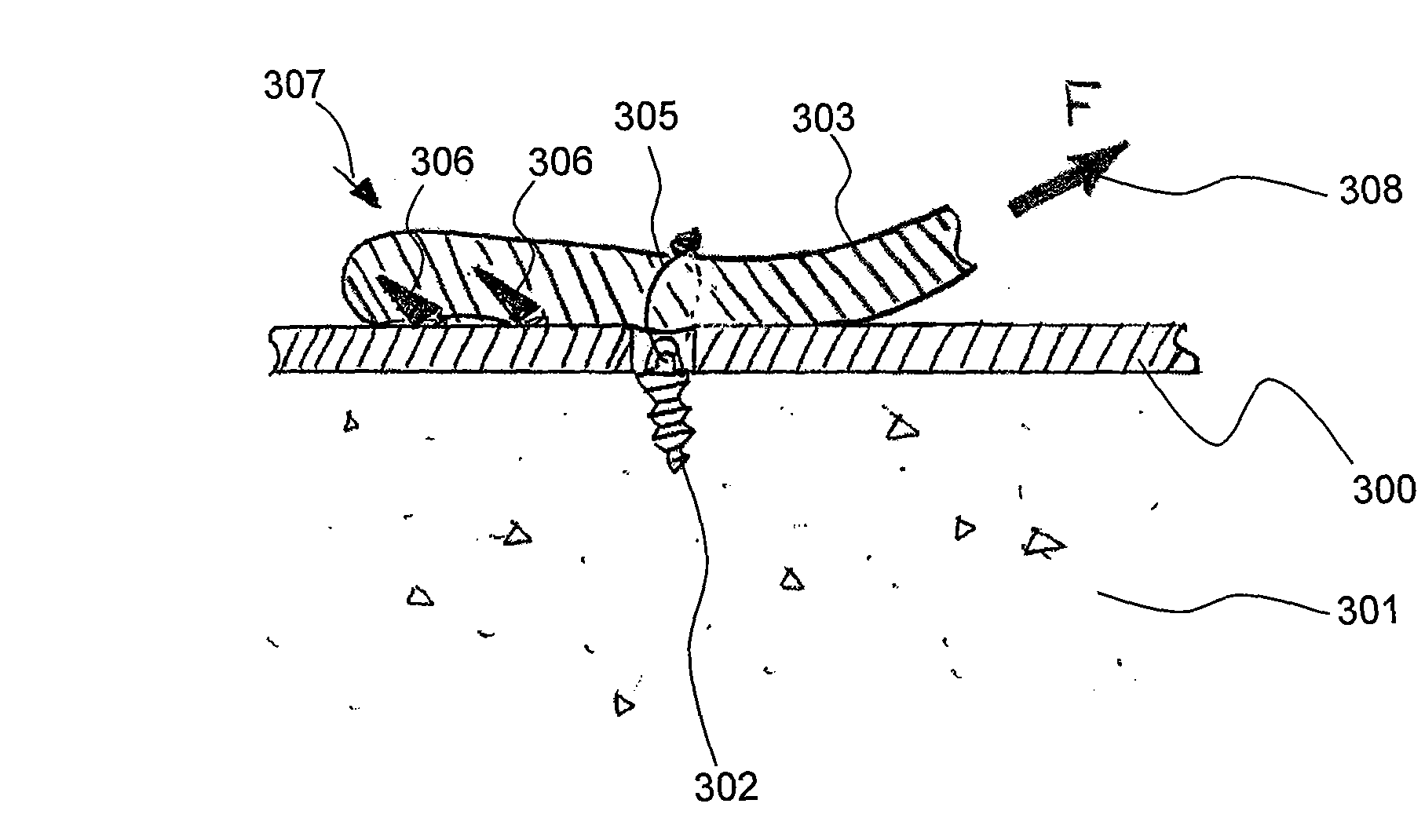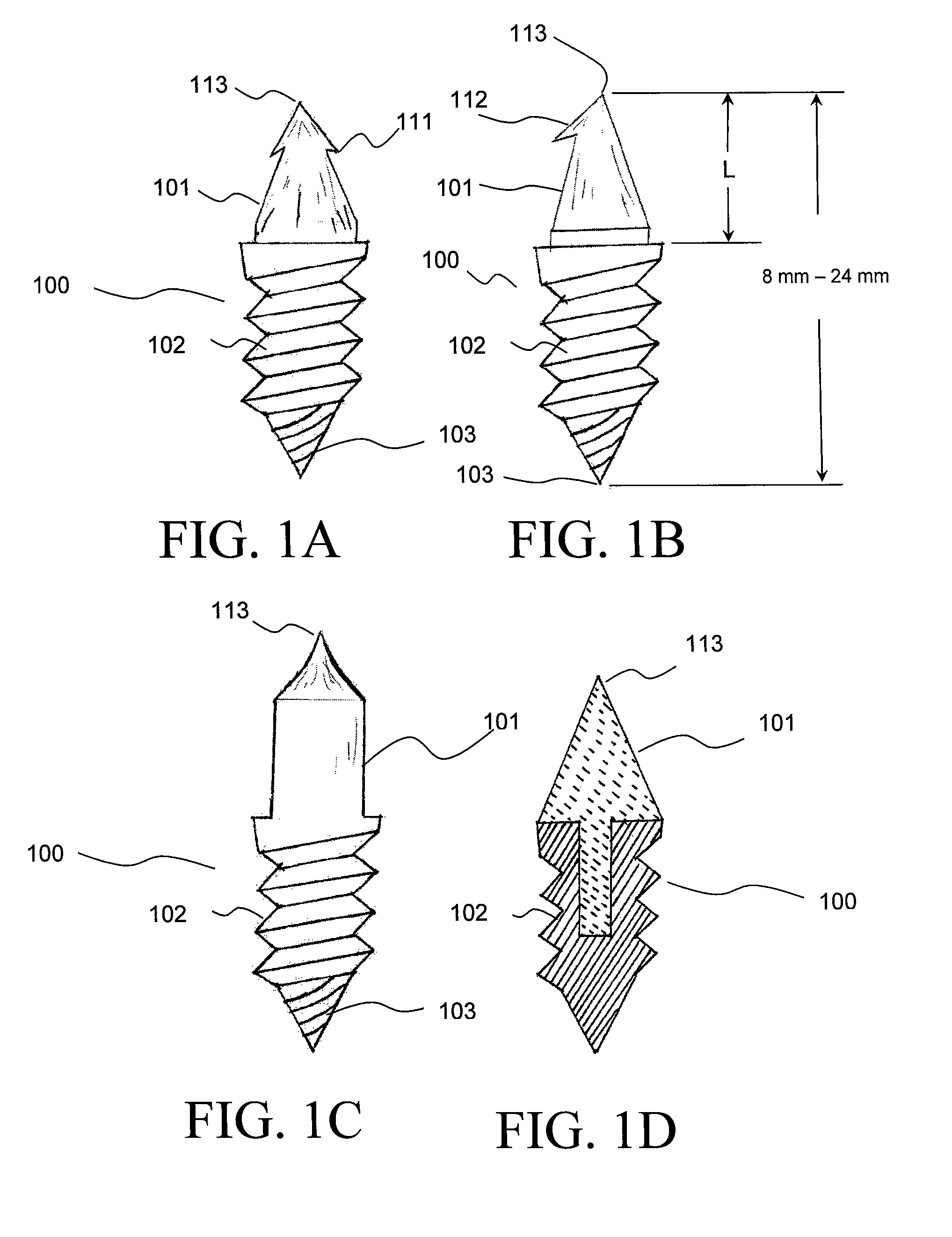Apparatus for discrete tissue anchoring for soft tissue repair and method of use
a discrete tissue and anchoring technology, applied in the field of medical devices and procedures, can solve the problems of limiting the degree of stability that can be achieved during repair, and limit the number of, so as to improve the distribution of loads, improve the stability of tissue to bone interface, and improve the effect of repair
- Summary
- Abstract
- Description
- Claims
- Application Information
AI Technical Summary
Benefits of technology
Problems solved by technology
Method used
Image
Examples
Embodiment Construction
[0021]Several embodiments of the device of this invention are shown in FIGS. 1A-1F. Each of these devices, hereinafter called directional anchors 100, contains a bone-anchoring element 102 that is designed to anchor to bone and a tissue-anchoring element 101 that is designed to anchor to soft tissue. The directional anchors may also have self-tapping 103 or piercing 107 features that facilitate implantation into a hard object or bone. The bone-anchoring element 102 ideally has features such as threads, barbs or other anchoring features as shown in FIGS. 1A-1H, that would enable the surgeon to simply and stably anchor the directional anchor 100 into bone. Other techniques for anchoring structures into bone have been previously described and could be incorporated with this invention. The tissue-anchoring element 101 may have features, as shown in FIGS. 1A and 1B, such as barbs 111 and hooks 112, which enable better anchoring to soft tissue than prior art devices. The tissue-anchoring ...
PUM
 Login to View More
Login to View More Abstract
Description
Claims
Application Information
 Login to View More
Login to View More - R&D
- Intellectual Property
- Life Sciences
- Materials
- Tech Scout
- Unparalleled Data Quality
- Higher Quality Content
- 60% Fewer Hallucinations
Browse by: Latest US Patents, China's latest patents, Technical Efficacy Thesaurus, Application Domain, Technology Topic, Popular Technical Reports.
© 2025 PatSnap. All rights reserved.Legal|Privacy policy|Modern Slavery Act Transparency Statement|Sitemap|About US| Contact US: help@patsnap.com



